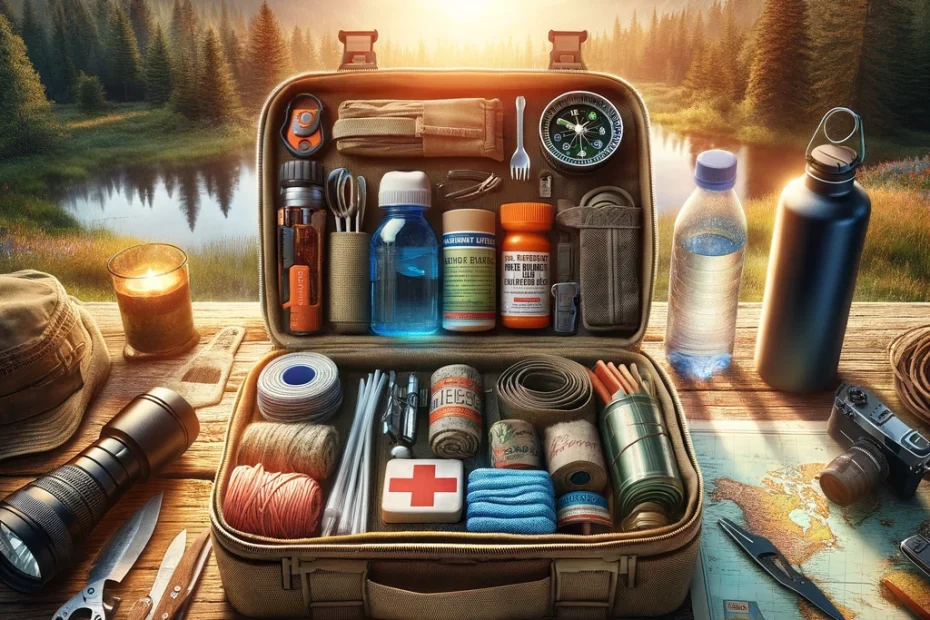Introduction
Embarking on the journey of prepping can often seem overwhelming to newcomers. With the vast array of information available, discerning what’s essential for your survival kit can be a daunting task. This guide aims to demystify the process, offering clear and concise advice on the must-have items for any survival situation. Whether you’re preparing for natural disasters, financial crises, or societal disruptions, having a well-equipped survival kit is your first step towards resilience and self-reliance.
The Beginner’s Guide to Prepping
Prepping, at its core, is about being prepared for any unexpected event that could disrupt the normal course of life. This can range from short-term natural disasters like hurricanes and earthquakes to long-term scenarios such as economic downturns or even pandemics. The essence of prepping lies not in fearmongering but in empowering oneself with the knowledge, skills, and supplies to handle various situations confidently.
Essentials for Your Survival Kit
A well-thought-out survival kit is pivotal for any prepper. It should encompass all the essentials needed to sustain life and safety during emergencies. The components of your kit can vary based on your location, the size of your family, and specific needs. However, certain items are universally acknowledged as must-haves.
Water and Filtration Systems: Water is life. Ensuring you have access to clean drinking water is paramount. Include water purification tablets, filters, and storage containers in your kit.
Food Supplies: Stock up on non-perishable food items such as canned goods, dried fruits, nuts, and energy bars. Consider the nutritional value and shelf life when selecting food for your kit.
First Aid Kit: A comprehensive first aid kit can be a lifesaver in emergencies. It should include basic medical supplies, medications, and items tailored to your family’s health needs.
Tools and Equipment: Essential tools include a multi-tool, flashlight, batteries, manual can opener, and a fire starter. These tools can help you navigate through various survival situations.
Personal Hygiene Items: Maintaining personal hygiene is crucial, especially in prolonged survival scenarios. Include soap, toothbrushes, toothpaste, and sanitary products.
Shelter and Warmth: Items like emergency blankets, sleeping bags, and tents can protect you from the elements and help retain body heat.
Communication Devices: A hand-crank or solar-powered radio can keep you informed during disasters. Consider including a backup charger for your mobile phone as well.
Clothing: Pack an extra set of clothes suitable for all weather conditions. Focus on durability and comfort.
Navigation Tools: Maps, compasses, or GPS devices can aid in navigation if you need to relocate or find resources.
The Beginner’s Guide to Prepping
Understanding the basics of prepping is crucial for beginners. This involves not only gathering supplies but also acquiring knowledge and skills. Learn basic first aid, how to purify water, and the fundamentals of navigation. The goal is to be as self-sufficient as possible in the face of adversity.
Building Your Survival Kit Over Time
Prepping doesn’t have to be a financial burden. Start small, focusing on the essentials, and gradually build your kit as resources allow. Keep in mind the shelf life of items and rotate your supplies accordingly to ensure they remain usable when needed.
Customizing Your Kit
No two survival kits are exactly alike. Tailor your kit to fit your specific needs, considering factors such as climate, medical conditions, and the number of people in your household. Personalization ensures your kit will be truly effective in your unique situation.
Staying Informed
Stay up-to-date with the latest information on potential threats and emergency preparedness techniques. Knowledge is as crucial as physical supplies when it comes to prepping.
Practicing with Your Kit
Familiarize yourself with the items in your survival kit. Practice using them in non-emergency situations to ensure you know how to utilize them effectively when it counts.
Networking with Other Preppers
Connecting with a community of like-minded individuals can provide valuable support and information exchange. Consider joining local or online prepping groups to share resources and learn from experienced preppers.
The Importance of Mental Preparedness
Physical supplies are essential, but mental resilience is equally important. Cultivate a positive mindset and stress management techniques to maintain your composure in challenging situations.
Conclusion
Embarking on the prepping journey is a proactive step towards ensuring your and your family’s safety in uncertain times. By focusing on the essentials outlined in this guide, beginners can create a comprehensive survival kit tailored to their specific needs. Remember, prepping is a continuous process of learning, adapting, and preparing for the unknown. Start small, stay informed, and gradually build your resilience over time. The path to preparedness is a journey, not a destination.
FAQs
What is the first step in beginning to prep?
- Start by assessing your needs and the specific risks in your area. Then, focus on assembling the essentials for your survival kit.
How much water should I store in my survival kit?
- Aim for at least one gallon of water per person per day for at least three days. Adjust the quantity based on your family size and needs.
Can I prep on a budget?
- Yes, prepping can be done gradually and on a budget. Focus on essentials and take advantage of sales and bulk purchases.
What are the most important skills for a prepper?
- Basic first aid, water purification, and food preparation are crucial skills. Also, learning to be adaptable and mentally resilient is important.
How often should I update my survival kit?
- Review and update your kit at least once a year. Rotate supplies to keep them fresh and add items as your needs change.
